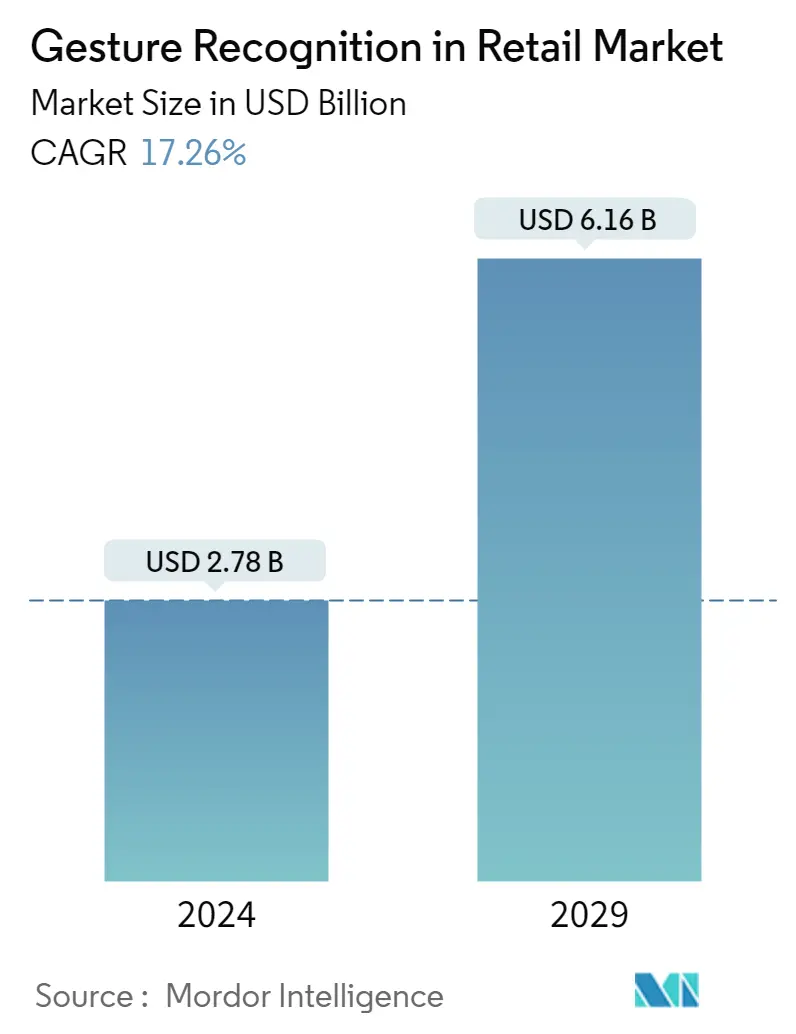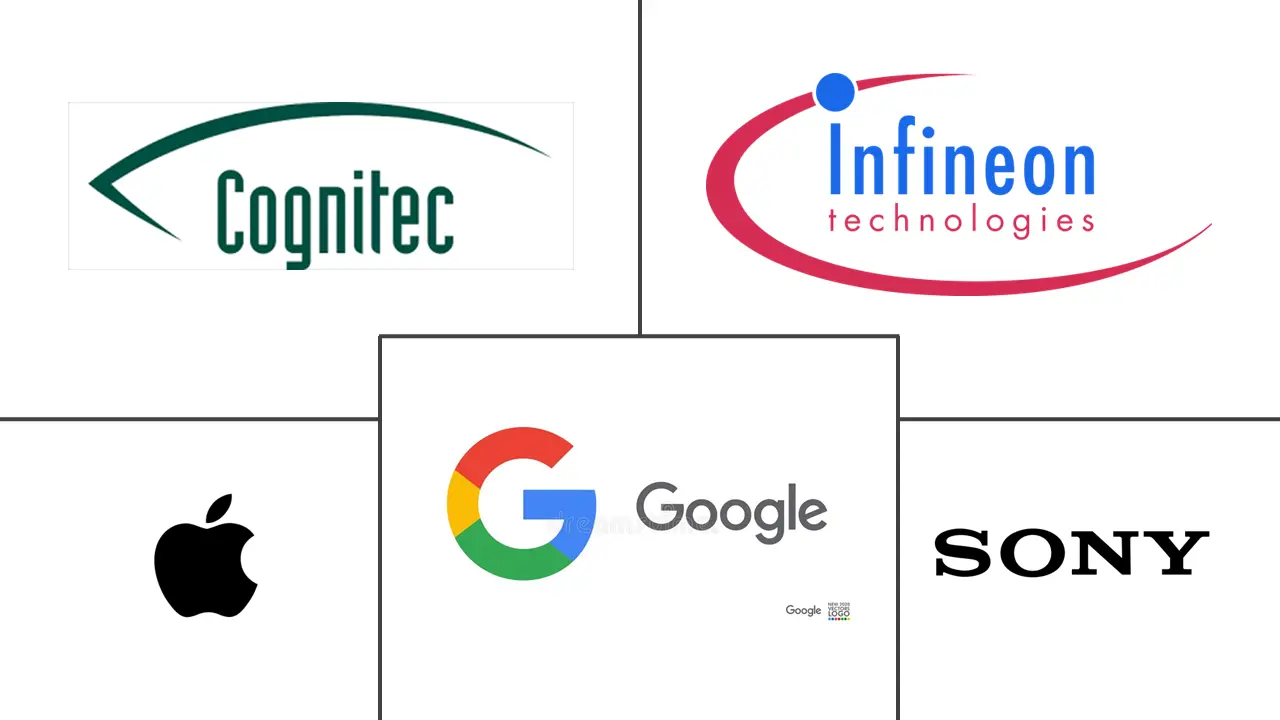Market Size of Gesture Recognition in Retail Industry

| Study Period | 2019 - 2029 |
| Market Size (2024) | USD 2.78 Billion |
| Market Size (2029) | USD 6.16 Billion |
| CAGR (2024 - 2029) | 17.26 % |
| Fastest Growing Market | Asia Pacific |
| Largest Market | North America |
Major Players
*Disclaimer: Major Players sorted in no particular order |
Need a report that reflects how COVID-19 has impacted this market and its growth?
Gesture Recognition in Retail Market Analysis
The Gesture Recognition in Retail Market size is estimated at USD 2.78 billion in 2024, and is expected to reach USD 6.16 billion by 2029, growing at a CAGR of 17.26% during the forecast period (2024-2029).
The market will likely benefit from rising global per capita income, technological developments, and more digitization in the retail industry. The expanding use of the Internet of Things (IoT) and the growing need for comfort and convenience in product consumption are also driving market expansion.
As per the Global Alliance for Improved Nutrition, there will be around 13 million retail food stores in India by 2022. This included both conventional and new merchants within the sector. While there has been consistent growth since 2013, it has been chiefly constituted of traditional retailers. Many retail establishments would provide opportunities for the studied market to expand. Various prototypes have been created to make hand gesture detection more affordable than conventional interface tools like keyboards and mice. Hand gestures are highly expressive, easily interact with the environment, and effectively transmit information may cause leading suppliers' rising interest.
Reliable personal recognition is required by a wide variety of access control systems. Examples of these systems include ATMs, laptops, and cellular phones. If these systems fail to meet the demands of reliable and robust authentication, potential imposters may gain access to these systems. To enhance the security of access control systems, two-factor authentication (T-FA) has been introduced, wherein two factors are combined to authenticate a user. Such factors are expected to drive the studied market.
Further, retailers can use facial recognition technology to create faster and more frictionless transactions, increase customer satisfaction through rich analytics, offer targeted advertising, better manage employee attendance and store security, and personalize experiences for VIPs and loyalty program members. Investments in smart retail technology will guarantee that merchants continue giving the best in-store experience possible, improving brand loyalty and sales.
The capacity of computers to visually recognize hand movements is critical for the future development of HCI. However, vision-based recognition of hand gestures, particularly dynamic hand gestures, is a difficult interdisciplinary challenge for three reasons: hand gestures are diverse, have multiple meanings, and vary spatiotemporally; the human hand is a complex non-rigid object that is difficult to recognize; and computer vision is an ill-posed problem in and of itself.
The COVID-19 pandemic made contactless communication essential. Gesture recognition, which was relegated to AR/VR and biometric authentication background, benefited from this. The market had a lot of room for growth if platform-independent gesture detection systems were developed. Additionally, consumers' familiarity with AR/VR systems and the minimum interaction required with screens can broaden its application in various industries. Smartphones and the advertising space worked together to seamlessly transmit relevant ads and deliver information in the digital sphere.
This is in response to numerous smart city projects that would be implemented in various nations.
